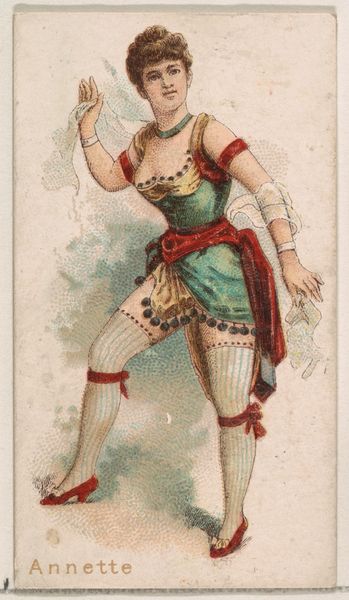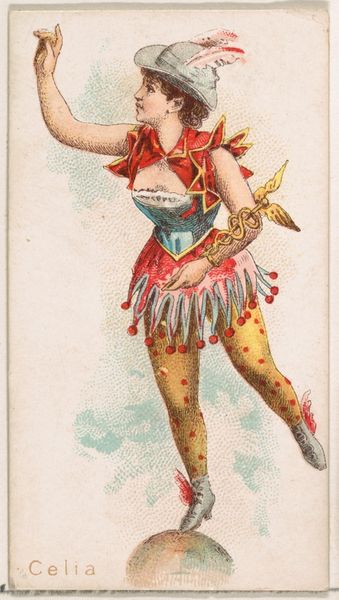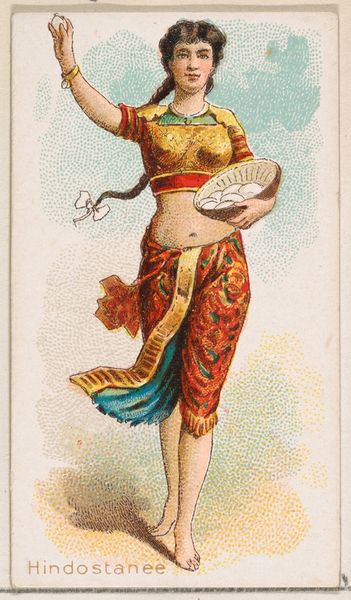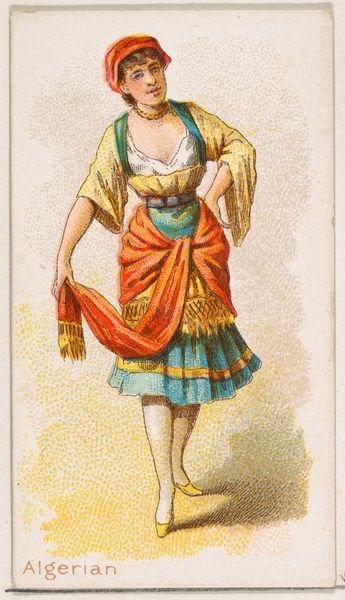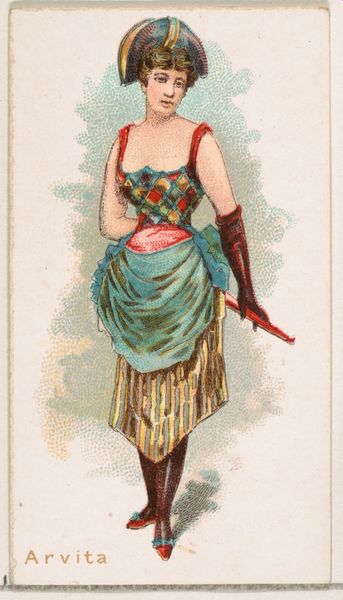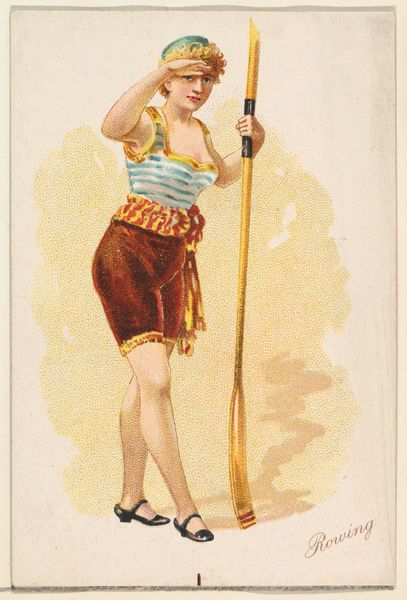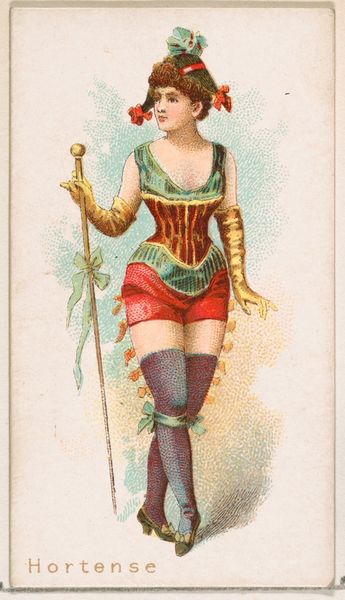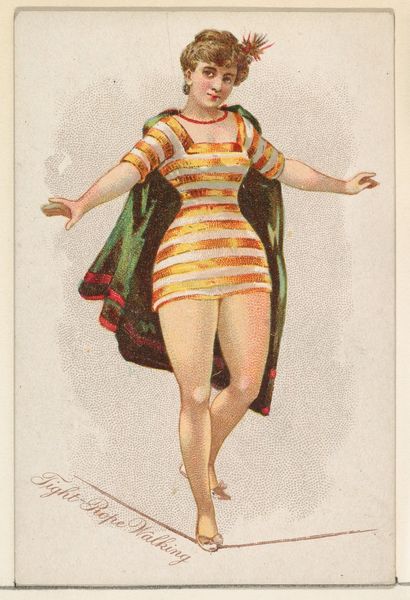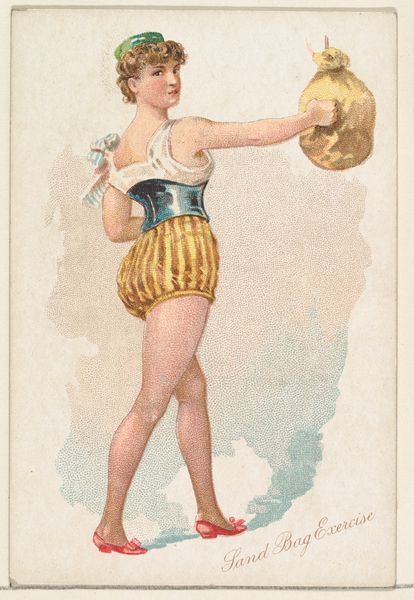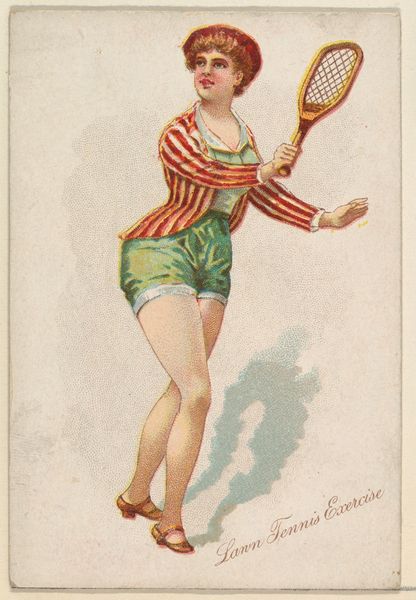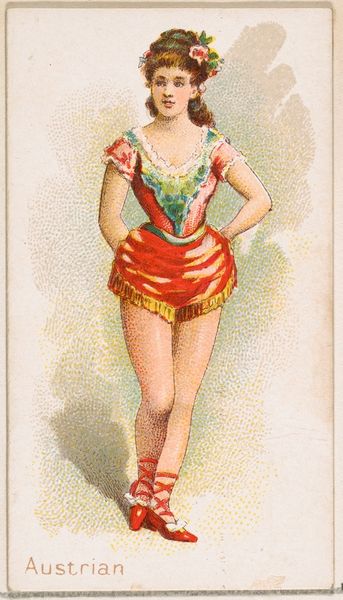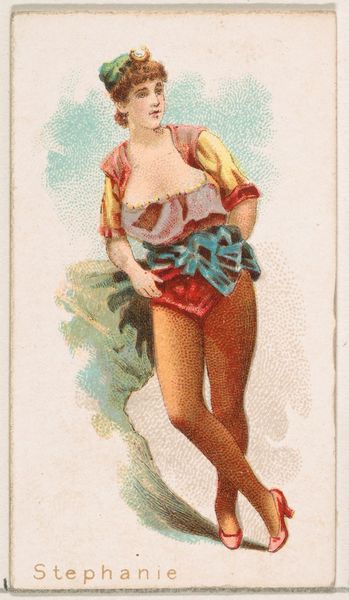
Skipping Rope, from the Pretty Athletes series (N196) issued by Wm. S. Kimball & Co. 1889
0:00
0:00
Dimensions: Sheet: 3 3/4 × 2 1/2 in. (9.5 × 6.3 cm)
Copyright: Public Domain
Editor: This is "Skipping Rope," a lithograph from 1889 by William S. Kimball & Co., part of the Pretty Athletes series. It feels like it's trying to be playful, but the woman's pose feels a little… stiff? What's your take on this image? Curator: Well, let's unpack that tension between playfulness and stiffness. Consider the context: late 19th century, right? These “Pretty Athletes” cards were often included with tobacco products. It speaks volumes about the commercialization of the female form. Are we celebrating athleticism, or are we objectifying women within the burgeoning advertising industry? What does it tell us about the construction of ideal femininity at the time? Editor: So you’re saying it’s less about celebrating sports and more about selling tobacco using an image of an idealized woman? Curator: Exactly. Notice the costuming: A theatrical version of athletic wear. And her gaze... she's looking at the viewer, the presumed consumer. It's performative. Now, let's think about class. Who was skipping rope, and why were these images considered marketable? Were they aimed at male consumers who felt like it re-inforced societal power dynamics? Editor: I didn't think about it like that. The Ukiyo-e influence is evident with this drawing; it adds a whole layer of orientalism. It also places her as the “exotic” and sexualizes athleticism. It feels less innocent now. Curator: Precisely! It reflects an era of cultural appropriation where non-Western artistic traditions were co-opted and reshaped to appeal to a Western audience, and to feed into orientalist fantasies and gender roles. Thinking about it this way, does your reading of "playful" shift at all? Editor: It does, drastically. It feels much more calculated, much more... cynical. I'll never look at vintage ads the same way! Curator: And that's the power of situating art within its historical and social context. We start to see the narratives they are constructing – and for whom.
Comments
No comments
Be the first to comment and join the conversation on the ultimate creative platform.
